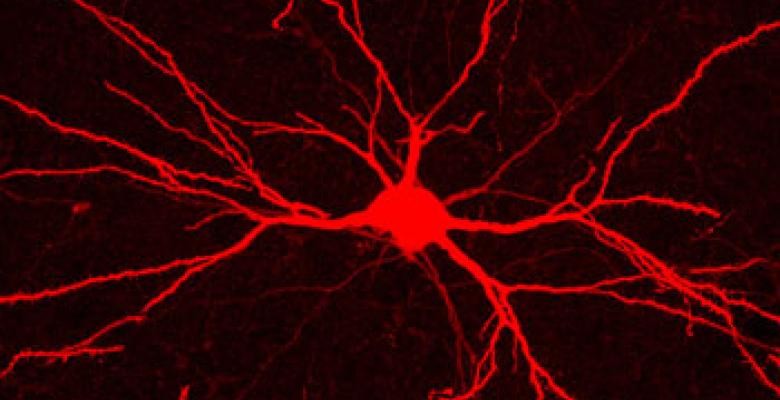Study Advances New Theory of How the Brain Is Wired
Speaking. Seeing. Hearing. Thinking. Remembering. Understanding this sentence and making a decision about whether or not to read on. All of this work is handled in the cerebral cortex, the deeply creased, outermost portion of the brain that is the center of all the higher brain functions that make us human. Humans have the thickest cortex of any species but, even so, it measures no more than 4 millimeters (.16 inches) thick.
For decades, scientists thought they had a pretty clear understanding of how signals move through the cerebral cortex. By studying the anatomy of nerve axons—the wires that connect nerve cells—they had concluded that information is relayed through a “column” of six layers of specialized nerve cells in a series of hand-offs that begins in the mid-layer of the cortex, then moves to other layers before triggering a behavioral response.
Now a study by Columbia neuroscientist Dr. Randy Bruno indicates this longstanding view is incorrect. Looking at how sensory information is processed in rats, Bruno found that signals are processed in two parts of the cortex simultaneously rather than in series—almost as if there are two brains.
“Our findings challenge dogma,” says Bruno, assistant professor of neuroscience and a faculty member at Columbia’s new Mortimer B. Zuckerman Mind Brain Behavior Institute and the Kavli Institute for Brain Science. “The upper and lower layers form separate circuits that do separate things.” The discovery, he says, “opens up a different way of thinking about how the cerebral cortex does what it does, which includes not only processing sight, sound and touch but higher functions such as speech, decision-making and abstract thought.”
The study, co-authored with Christine Constantinople, who earned a Ph.D. at Columbia and is now a post-doctoral researcher at the Princeton Neuroscience Institute, appears in the June 28 edition of the journal "Science."
The research was conducted in the well-understood sensory system of rat whiskers, which operate much like human fingers, providing tactile information about shape and texture. This information travels from nerve fibers at the base of the whiskers to the thalamus in the midbrain and then is processed in the cerebral cortex. Past research has mapped each whisker to a specific barrel-shaped cluster of neurons in the brain. “The wiring of these circuits is similar to those that process senses in other mammals, including humans,” Bruno notes.
The new study relies on a sensitive technique that allows researchers to record how signals move across synapses from one neuron to the next in a live animal by using micropipettes whose tips are just 1 micron wide—one-thousandth of a millimeter. The recordings showed that signals are relayed from the thalamus to the mid- and deeper layers of the cortex simultaneously with surprisingly robust signaling to the deeper layer.
To confirm that the deeper layer receives sensory information directly from the thalamus, the researchers blocked all signals from the mid-layer using a local anesthetic. Sure enough, activity in the deeper layer remained unchanged.
“This was very surprising,” says Constantinople. “We expected activity in the lower layers to be turned off or very much diminished.”
The study suggests that the upper and lower layers of the cerebral cortex form separate circuits that play separate roles in processing sensory information. Researchers believe that the deeper layers are evolutionarily older—they are found in reptiles, for example, while the upper and middle layers appear in more evolved species and are thickest in humans.
One possibility, suggests Bruno, is that basic sensory processing occurs in the lower layers: for example, visually tracking a tennis ball. Processing that involves integrating context or experience might be done in the upper layers – for example, watching where an opponent is hitting the ball and planning where to return the shot.
German neurobiologist Bert Sakmann, who won a 1991 Nobel Prize for developing the micropipette system of mapping nerve impulses, describes the study as a game changer. “Dr. Bruno has produced a technical masterpiece that now firmly establishes two separate input streams to the cortex,” he says.
Bruno’s lab is now focused on exploring how the various layers of cortex relate to specific behaviors, such as memory and learning. “Developing a more refined understanding of cortical processing will take the combined efforts of anatomists, cell and molecular biologists, and animal behaviorists,” says Dr. Thomas Jessell, Claire Tow Professor of Motor Neuron Disorders in Neuroscience and a director of both the Zuckerman Institute and the Kavli Institute. “The Zuckerman Institute, with its multidisciplinary faculty and broad mission, is ideally suited to building on Bruno’s fascinating new insight.”
